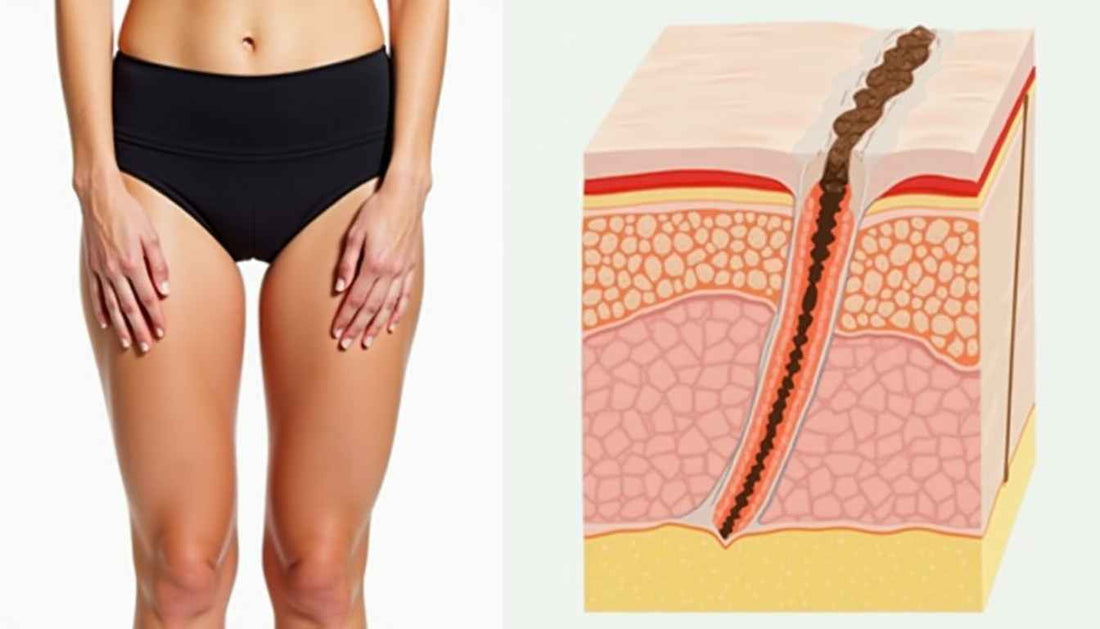
Deep Tissue Massage for Cellulite: Does It Really Work?
Share
If you're looking for a natural way to smooth your skin and reduce the appearance of cellulite, deep tissue massage for cellulite might be the solution. Known for targeting deeper layers of muscle and connective tissue, this massage technique may offer more than just relief from tension—it could improve circulation, break up fat deposits, and reduce the dimpled look of cellulite over time. In this guide, we’ll explore how it works, what the research says, and whether it's right for you.
Featured Snippet Answer:
Deep tissue massage can help reduce cellulite by stimulating blood flow, breaking down fat deposits, and supporting lymphatic drainage, which may improve skin texture over time.
What Is Deep Tissue Massage?
Deep tissue massage is a therapeutic technique that uses firm pressure and slow strokes to reach deeper layers of muscle and fascia (connective tissue). It differs from Swedish massage in its intensity and goal of releasing chronic muscle tension and tightness.
How Deep Tissue Massage Targets Cellulite
Cellulite forms when fat cells push through connective tissue under the skin. Deep tissue massage addresses this by:
- Increasing blood circulation to nourish skin and underlying tissues.
- Breaking up fascia adhesions that contribute to skin dimpling.
- Boosting lymphatic drainage to flush out toxins and reduce fluid retention.
- Loosening tight connective tissue to smooth skin’s surface.
Key Benefits for Cellulite Reduction
1. Improved Circulation
Deep massage boosts blood flow to affected areas, bringing oxygen and nutrients that support skin health.
2. Fascia Release
Cellulite is often connected to thickened fascia bands. Deep massage breaks up these adhesions.
3. Detoxification
Enhanced lymphatic flow helps eliminate toxins and excess fluid that can make cellulite more visible.
4. Muscle Toning Support
Tighter, toned muscles beneath the skin can make cellulite less prominent.
What to Expect During a Session
- Targeted pressure on thighs, buttocks, hips, or abdomen.
- Some discomfort may occur due to the deep pressure.
- Sessions usually last 45–90 minutes.
- Temporary redness or soreness is normal.
Note:
Deep tissue massage should always be performed by a trained professional to avoid bruising or tissue damage.
How Often Should You Get It?
For best results:
- Start with 1–2 sessions per week.
- Continue for at least 4–6 weeks.
- Combine with exercise and hydration for long-term benefits.
Scientific Insights
Studies show that massage therapies, especially when combined with physical activity and hydration, can significantly reduce the appearance of cellulite. However, results vary depending on age, skin type, and consistency of treatment.
Deep Tissue Massage vs. Other Cellulite Treatments
| Treatment | Invasiveness | Cost | Effectiveness | Long-Term Results |
|---|---|---|---|---|
| Deep Tissue Massage | Non-invasive | $$ | Moderate to High | Yes (with maintenance) |
| Laser Therapy | Minimally invasive | $$$$ | High | Yes |
| Topical Creams | Non-invasive | $ | Low | Temporary |
| Cupping Therapy | Non-invasive | $$ | Moderate | Yes |
Internal Links:
FAQs
Does deep tissue massage permanently remove cellulite?
No, but it can significantly reduce its appearance with consistent sessions and a healthy lifestyle.
Is deep tissue massage better than cupping for cellulite?
Both have benefits. Deep tissue targets muscle and fascia, while cupping focuses more on circulation and lymphatic drainage.
Can massage cause bruising?
Mild bruising can occur, especially with deep pressure. It usually resolves within a few days.
How soon will I see results?
Most people notice smoother skin after 4–6 sessions, especially when combined with exercise and hydration.
CTA:
Ready to try deep tissue massage for cellulite? Download our FREE Massage Comparison Guide to see which technique is best for your body and goals. Get smoother, firmer skin—naturally.
